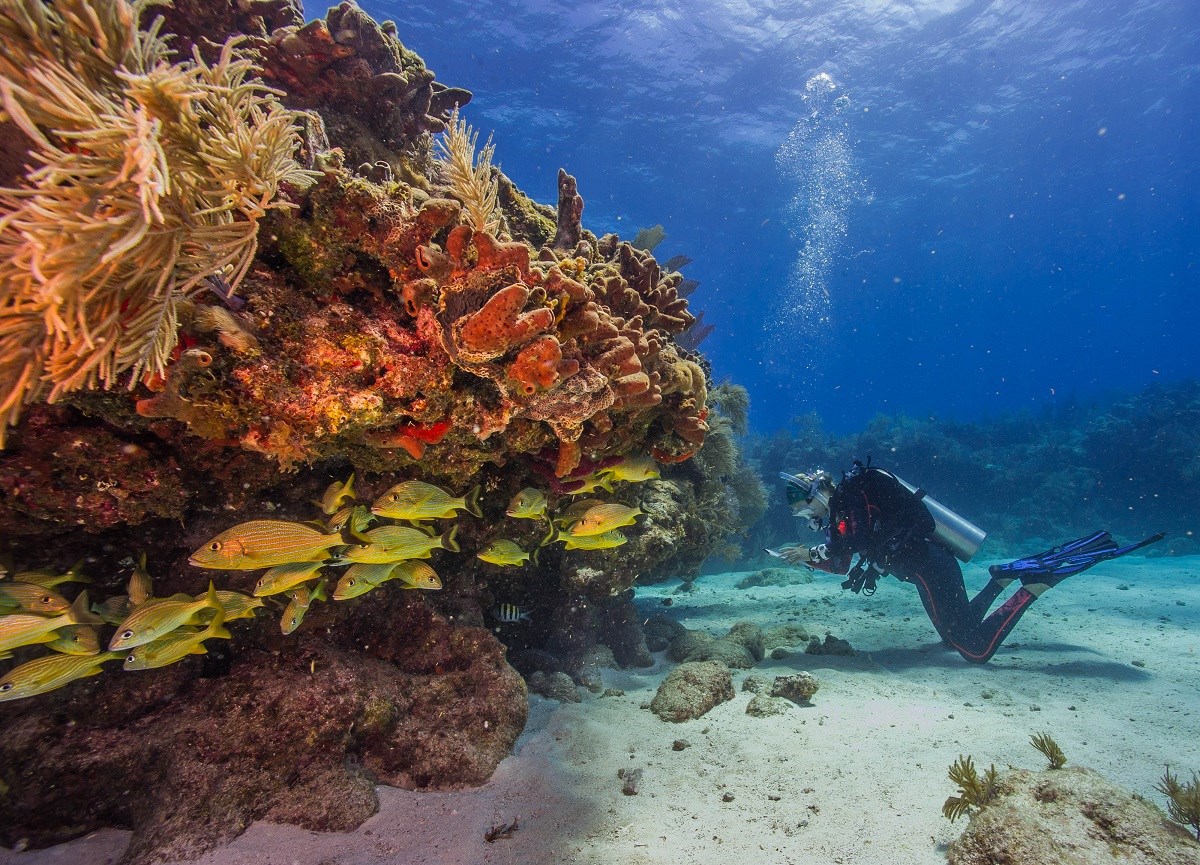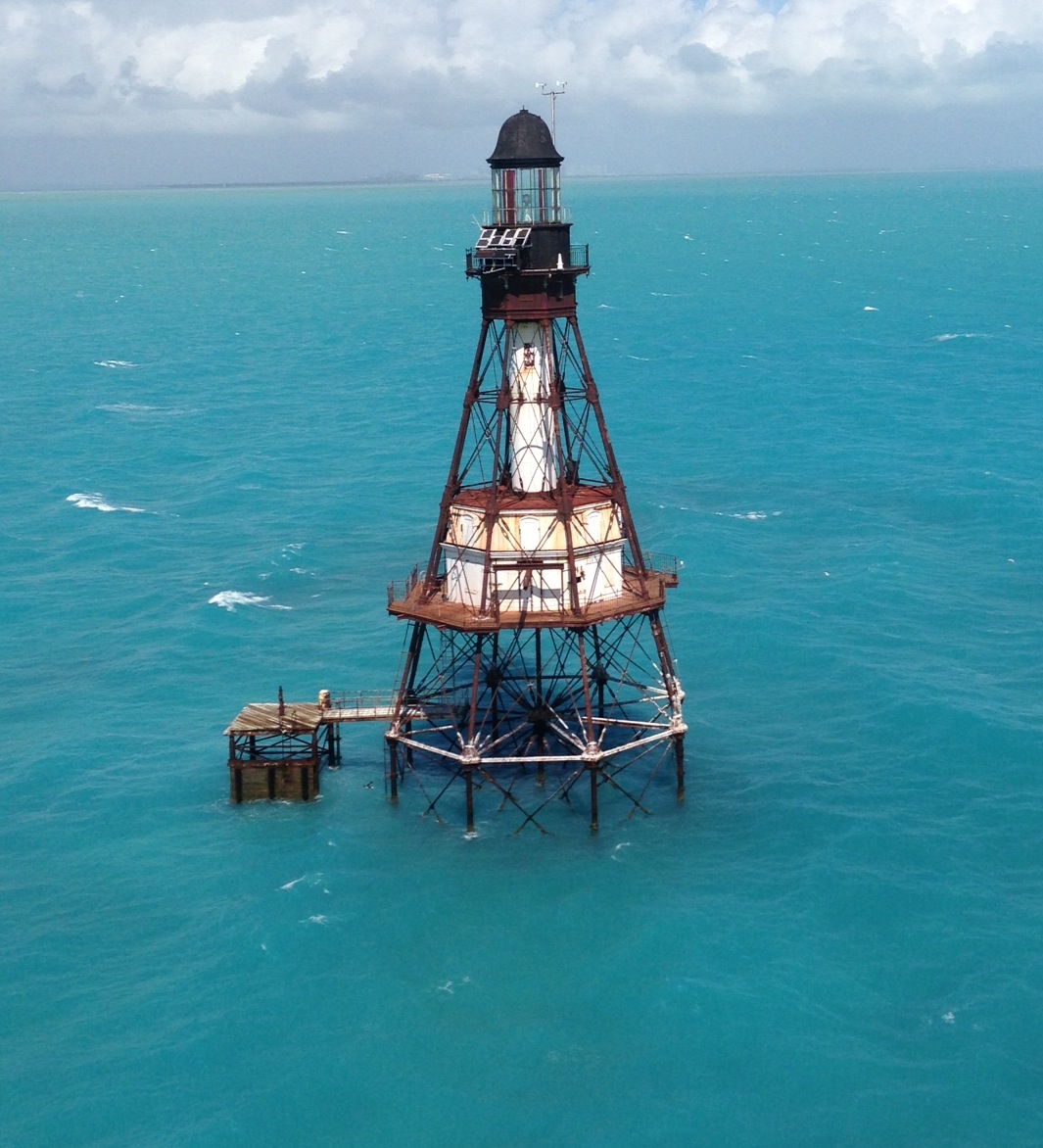
Biscayne National Park
Turquoise waters, secluded islands and vibrant coral reefs
Turquoise waters, secluded islands and vibrant coral reefs
When people envision Florida’s coasts, the gentle waves lapping at the soft sand under a bright sun generally come to mind, but the greatest things our waters have to offer are actually found under the surface.
Covering close to 173,000 acres, four distinct ecosystems melt into one another creating rich edge communities or “ecotones.” These edges support an incredible array of wildlife, including hundreds of species of colorful fish, plants found nowhere else in the United States and visitor favorites like pelicans, manatees and sea turtles.
The park is home to an incredible diversity of animals and plants including over 600 native fish, neo-tropical water birds and migratory habitat, as well as 20 threatened and endangered species including the Schaus’ swallowtail butterfly and Florida semaphore cactus, as well as the previously mentioned sea turtles and manatees.
It also contains the northern portion of the world’s third-largest coral reef system and the only living coral barrier reef in the continental United States, the Florida Reef. Thanks in part to this reef, Biscayne National Park is the final resting place for a string of shipwrecks along its Maritime Heritage Trail, a project brought to life with the support of The Alliance.
Winds, currents, storms and the park’s close proximity to one of the nation’s largest urban areas means that the entire park is in a constant state of flux — ever-changing in the face of new challenges posed by the constant cycle of building and destruction. And we are here to find solutions to those challenges.
Biscayne Education
Biscayne National Park offers robust virtual and in-person educational programs to engage students with hands-on science and nature-based learning.
In-Person Programs:
– Biscayne Explorer Program: This ranger-led program introduces students to marine science through activities like using digital microscopes, learning about algae blooms, and seining to catch juvenile fish.
– Environmental Science Camping Program: A three-day camping experience on Elliott Key, where students explore seagrass communities, learn about marine ecosystems, and participate in nature walks.
These programs serve over 4,750 students from more than 40 schools annually, providing educational enrichment and promoting STEM careers.
Support from the Alliance
The Alliance for Florida’s National Parks funds these essential programs, as the government does not fund education in national parks. Your support ensures these programs continue to thrive and reach more students.
Why Your Support Matters
Your donations help:
– Enhance educational opportunities in science and nature
– Promote conservation and environmental stewardship
– Inspire future generations to pursue STEM careers
Beach Clean-Ups for Sea Turtles
During the 2023-2024 season, 389 dedicated volunteers removed over 46,700 pounds of debris from Biscayne National Park beaches, significantly aiding sea turtle conservation. This project focuses on restoring nesting habitats and protecting these magnificent creatures through two key actions:
– Beach Clean-Ups: Volunteers clear debris that threatens sea turtles, ensuring safer nesting grounds. Accumulated debris can cause nesting turtles to abandon their efforts and trap hatchlings.
– Daily Beach Patrols: During the nesting season, volunteers and park staff patrol the beaches to locate, protect, and monitor sea turtle nests, ensuring hatchlings’ safe journey to the sea.
Participating in these clean-ups offers volunteers a unique, hands-on experience in one of our national parks. They engage with park rangers, learn about park resources, and directly contribute to preserving endangered sea turtles.
Mooring Buoys: Protecting Biscayne National Park’s Marine Ecosystem
Approximately 95 percent of Biscayne National Park’s 173,000 acres are marine, making it a haven for boating and fishing enthusiasts. The park’s seagrass beds and coral reefs are vital habitats for numerous species, including those of special status. Heavy visitor use, especially during peak seasons and events like lobster mini-season, leads to a shortage of mooring buoys, causing improper anchoring that significantly damages sensitive seagrass beds and coral reefs. To address this, the Alliance has funded 90 mooring buoys, with plans to increase this number. These buoys protect natural resources by preventing anchor damage, enhance the visitor experience with safe anchoring options, and promote consistency with existing buoy systems in the Florida Keys National Marine Sanctuary.
Marine Debris Clean-Ups: A Vital Effort for Biscayne National Park
In the 2023-2024 season, 34,564 pounds of marine debris were removed from Biscayne National Park, significantly contributing to the health of its marine ecosystems. This project focuses on eliminating various types of marine debris, including plastic bottles, fishing gear, discarded nets, and other pollutants that endanger marine life and habitats. Marine debris poses a severe threat to the park’s coral reefs and marine life, smothering corals, entangling marine animals, and introducing harmful toxins into the ecosystem. In addition to debris removal, scientists also eliminate invasive lionfish, which prey on native fish and disrupt the ecological balance. By consuming large numbers of juvenile and smaller fish, lionfish significantly reduce biodiversity and hinder coral reef recovery. During clean-up operations, volunteers and scientists work tirelessly to clear pollutants from the water and actively remove lionfish to protect native species and support reef health. These efforts are crucial for maintaining the integrity of Biscayne National Park’s marine ecosystems, providing a better environment for marine life, and enhancing the experience for park visitors.
Events
Biscayne National Park offers award-winning, community-centered programming that engages and connects visitors with the park’s natural beauty and resources.
From hosting ceremonies that welcome new citizens to boat-based shoreline clean-ups, to the educational mastery of the Hartzog Award-winning, volunteer-led Family Fun Fest program, we value the input, dedication, and participation of our local community.
Biscayne has a history of providing excellent programming that continues to grow and connect more visitors to the national park. This project enables park staff to continue offering valuable year-round interpretive programming for the diverse South Florida community, with the goal of reaching new audiences.
The types of community events to be hosted include:
– Park After Dark: Monthly events on the third Saturday, December-April.
– Paddle Biscayne: Coming in April 2025 for National Park Week and Earth Day. Tickets and details available in February 2025.
– Fishing Clinics: Every Saturday from 12pm-4pm. Young anglers can learn sustainable fishing techniques and earn their Junior Angler badge. Please call (786) 335-3620 to ensure the clinics are still ongoing.
– Paddling Clinics: Every Saturday. Enjoy guided paddling tours to explore the park’s beautiful waterways. Please call (786) 335-3620 to confirm the schedule.
– Citizenship Ceremonies: Offered during the winter months.
– Volunteer Clean-Up Events
"The bay belongs to all of us, not a few."
— Lloyd Miller, advocate for transforming Biscayne into a national park




